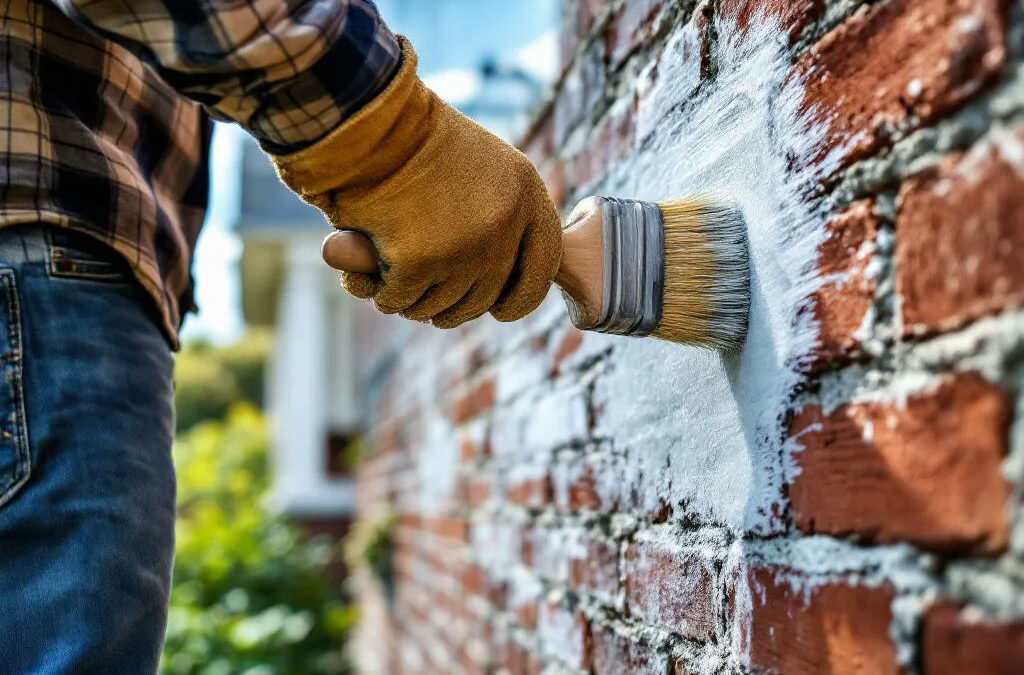Introduction
Waterproofing exterior brick walls is essential for maintaining the structural integrity and aesthetic appeal of your property. Over time, exposure to moisture can lead to severe damage, including mold growth and weakening of the brick structure. Understanding the importance of waterproofing is the first step in preventing these common issues caused by water damage.
Understanding the Brick Material
Properties of Brick
Brick is a widely used building material known for its durability and thermal efficiency. However, its porous nature makes it susceptible to water absorption, leading to various structural problems. When water infiltrates brick, it can cause significant damage over time, necessitating effective waterproofing methods.
Reasons Brick is Susceptible to Water Damage
Despite its resilience, brick can absorb water, which may eventually compromise its integrity. Factors such as freeze-thaw cycles, rain, and humidity can exacerbate water damage in brick walls. Understanding these vulnerabilities is crucial for homeowners aiming to implement effective waterproofing solutions.
Signs of Waterproofing Problems
Efflorescence and Staining
One of the first signs of waterproofing issues in brick walls is efflorescence, which appears as white, powdery stains on the surface. This occurs when water dissolves salts within the brick and mortar, which then crystallize upon evaporation. If left untreated, efflorescence can lead to further deterioration of the brick material.
Cracks and Crumbling Mortar
Cracks in the brick and crumbling mortar joints are also telltale signs of water damage. These issues not only compromise the visual appeal but also allow water to penetrate more deeply into the structure. Addressing these cracks promptly is critical to preventing extensive damage and costly repairs.
Water Seepage and Mold Growth
Water seepage, especially during heavy rain, is another indicator of waterproofing problems. Persistent moisture can lead to mold growth, posing health risks to inhabitants and further weakening the entire structure. Identifying these signs early can help mitigate risks associated with water damage.
Waterproofing Methods
Surface Sealants
Types of Sealants
Surface sealants, such as silicone and acrylic, create a protective barrier on the brick surface to prevent water infiltration. Silicone sealants offer a flexible, long-lasting solution, while acrylic sealants are easier to work with and ideal for DIY projects. Understanding the properties of different sealants can help homeowners choose the best option for their needs.
Application Process
Applying surface sealants involves cleaning the brick surface thoroughly and ensuring it is dry before application. Once prepared, the sealant can be sprayed or brushed evenly over the brick. Once cured, the sealant forms a protective layer that enhances the wall’s resistance to moisture.
Penetrating Sealers
How They Work
Penetrating sealers work by infiltrating the brick material and creating a hydrophobic barrier that repels water. Unlike surface sealants, these products do not alter the appearance of the brick while providing long-lasting protection. Knowing how penetrating sealers function is crucial for making an informed decision about waterproofing treatment.
Benefits and Drawbacks
The primary advantage of penetrating sealers is their ability to protect while maintaining the brick’s natural look. However, they may require reapplication every few years, depending on weather conditions and brick exposure. Weighing the benefits and drawbacks is essential before selecting the right waterproofing method.
Water Repellent Treatments
Silicone vs. Silane/Siloxane
Water repellent treatments utilize different chemical formulations, with silicone and silane/siloxane being the most common. Silicone treatments offer excellent water resistance, while silane/siloxane are known for their smaller molecules, which allow for deeper penetration and longer-lasting protection. Understanding the differences will help in choosing the right treatment for your brick walls.
Application and Longevity
The application of water repellent treatments is similar to other sealants, requiring a clean and dry surface. Once applied, these products can last several years, but their effectiveness can be impacted by weather conditions. Regular maintenance is necessary to ensure that the protective layer remains intact for extended periods.
Brick Mortar Repair
Importance of Maintaining Mortar Joints
Maintaining mortar joints is a critical aspect of waterproofing brick walls. Damaged or deteriorated mortar can lead to significant water infiltration, undermining the effectiveness of any waterproofing treatment. Regular inspections and timely repairs of mortar can extend the life of your brick wall.
Recommended Materials and Techniques
Using high-quality mortar repair materials is vital for ensuring a durable fix. Techniques such as tuckpointing can be employed to replace damaged mortar while preserving the original appearance of the brick. Properly executed repairs will significantly enhance the waterproofing capability of your brick walls.
Preventive Maintenance
Regular Inspections
Conducting regular inspections is the best way to assess the condition of your brick walls. Look for signs of water damage, such as cracks, mold, or efflorescence. Early detection will allow for timely interventions, thereby prolonging the life of your brick walls.
Cleaning Tips for Brick Walls
Maintaining the cleanliness of your brick walls can enhance their durability and prevent the buildup of harmful substances. Gently cleaning the surface with a soft-bristle brush and mild detergent can help eliminate dirt and organic growth without damaging the brick. Regular cleaning is crucial in preserving your brick walls’ aesthetics and functionality.
Landscape and Drainage Considerations
Proper landscaping and drainage systems play a significant role in preventing water damage to brick walls. Ensure that downspouts direct water away from the foundation, and consider grading the landscape to facilitate efficient drainage. By addressing these elements, you can minimize moisture-related issues and protect your brick surfaces.
Professional vs. DIY Waterproofing
When to Hire a Professional
While DIY waterproofing methods can be effective, hiring a professional may be necessary for larger-scale projects or when significant damage is present. Professionals can provide expert assessments and recommend the most appropriate solutions to mitigate water damage effectively. Knowing when to seek professional help is crucial for effective maintenance.
DIY Tips for Homeowners
For homeowners who prefer a DIY approach, there are many effective solutions available. Start with thorough cleaning and minor repairs to mortar joints, then apply a suitable sealant or water-repellent treatment. Following product instructions carefully and investing the time in preparation will yield the best results for waterproofing brick walls.
Conclusion
In summary, waterproofing exterior brick walls is vital to maintaining their durability and preventing water-related damage. Regular inspections, judicious choice of waterproofing methods, and proper maintenance can significantly enhance the longevity of your brick surfaces. By taking proactive steps, homeowners can ensure that their brick walls remain in excellent condition for years to come.
Don’t wait until the damage worsens — call us now at (916) 562-2345 to get a detailed quote and expert assistance with your waterproofing project.


